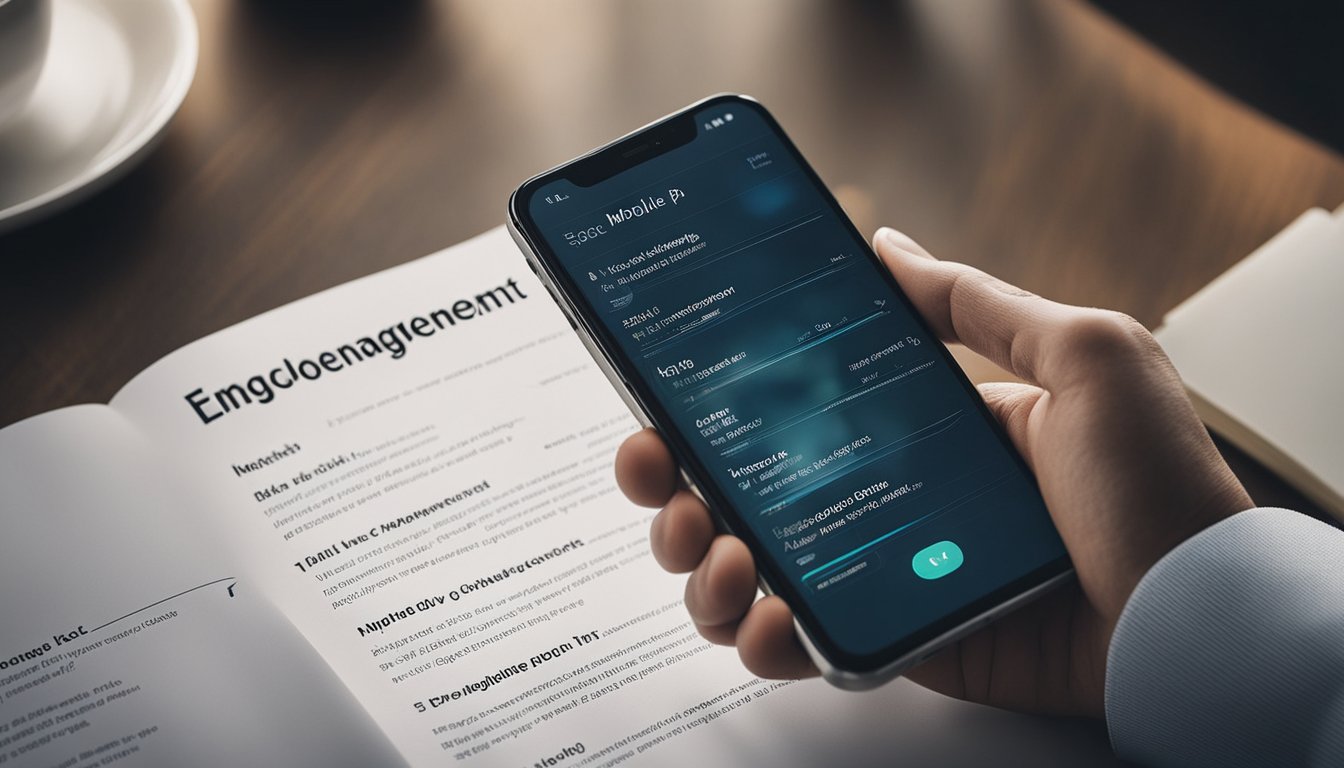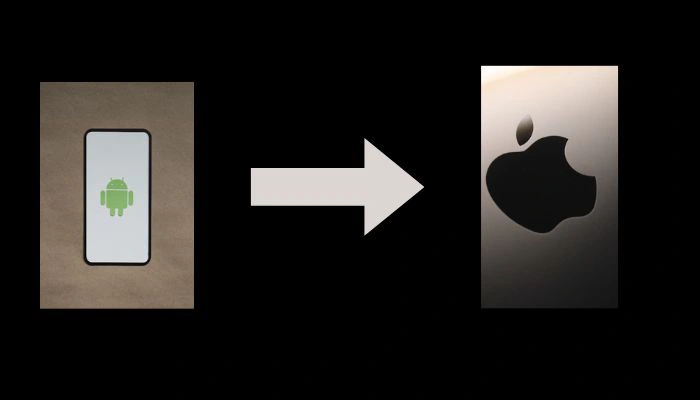10 Proven Strategies to Boost User Engagement on Mobile Apps
As mobile app usage continues to grow, it's becoming increasingly important to optimize user engagement to ensure that users stick around. User engagement is crucial for the success of any mobile app, as it not only helps to retain users but also increases the lifetime value of each user. In this article, I will share 10 ways to optimize user engagement on mobile apps.

Understanding the importance of user engagement is the first step towards optimizing it. User engagement refers to the level of interaction that users have with an app, and it can be measured in various ways, such as the number of sessions per user, the time spent on the app, and the number of actions taken within the app. By optimizing user engagement, you can increase user satisfaction, reduce churn, and improve the overall user experience.
There are several strategies for optimizing user engagement on mobile apps, including personalizing the app, optimizing the onboarding process, using push notifications, and leveraging social media. By implementing these strategies, you can enhance the user experience and increase retention rates. In the following sections, I will delve deeper into each of these strategies and provide actionable tips for implementing them.
Key Takeaways
- User engagement is crucial for the success of any mobile app.
- Optimizing user engagement can increase user satisfaction and reduce churn.
- Strategies for optimizing user engagement include personalizing the app, optimizing the onboarding process, using push notifications, and leveraging social media.
Understanding the Importance of User Engagement

As a mobile app developer, I know that user engagement is crucial for the success of my app. User engagement is the level of interaction that users have with my app and the value they get from it. It is a key metric that helps me identify how well my app is performing and how I can optimize it to improve user experience and satisfaction.
Defining Key Metrics
To measure user engagement, I track various metrics such as daily active users (DAU), monthly active users (MAU), retention rate, stickiness ratio, and lifetime value. DAU and MAU tell me how many users are actively using my app on a daily and monthly basis, respectively. Retention rate measures the percentage of users who continue to use my app after a certain period of time. Stickiness ratio measures how frequently users return to my app. Lifetime value measures the total revenue generated by a user during their lifetime as a customer.
Identifying Active Users
To understand user engagement, I need to identify my active users. Active users are those who regularly use my app and engage with its features. By analyzing user behavior, I can identify which features are most popular and which ones are not being used. This information helps me optimize my app and improve user engagement.
Recognizing Churn and Retention Rates
Churn is the rate at which users stop using my app. It is important for me to track churn rate and identify the reasons why users are leaving my app. By addressing the issues that are causing users to churn, I can improve retention rates and keep users engaged with my app.
Retention rate is the percentage of users who continue to use my app after a certain period of time. It is a key metric that helps me measure user engagement and the success of my app. By improving retention rates, I can increase user engagement and generate more revenue from my app.
In conclusion, understanding the importance of user engagement is crucial for the success of my mobile app. By tracking key metrics, identifying active users, and recognizing churn and retention rates, I can optimize my app and improve user engagement.
Strategies for Optimizing User Engagement

As a mobile app marketer, I know that user engagement is crucial for the success of any app. To optimize user engagement, there are several strategies that I recommend.
Effective Onboarding Process
An effective onboarding process is essential for ensuring that users understand the value of your app and how to use it. To achieve this, I recommend creating a simple and intuitive onboarding process that guides users through the app's key features. Additionally, consider adding a welcome survey to personalize the onboarding process and make the experience more engaging for users.
Personalization and Customization
Personalization is a powerful tool for increasing user engagement. By providing users with personalized messaging, personalized messages, and personalized content, you can create a more engaging experience that resonates with each user's unique needs and preferences. Consider using data from user profiles and behavior to personalize the app experience, such as recommending content or features based on their past interactions.
Leveraging In-App Messaging
In-app messaging is a great way to communicate with users and keep them engaged. By using in-app messages, you can provide users with relevant information, such as new features or promotions, while they are actively using the app. Consider using in-app messages to guide users through the app experience, provide helpful tips, or prompt them to take specific actions.
Utilizing Push Notifications
Push notifications are another powerful tool for increasing user engagement. By sending personalized and relevant push notifications, you can remind users of the value of your app and encourage them to return. However, be careful not to overuse push notifications, as this can lead to user fatigue and decreased engagement.
Incorporating Gamification
Gamification is a fun and engaging way to keep users coming back to your app. By incorporating game-like elements, such as badges, rewards, or challenges, you can create a more compelling and immersive experience. Consider using gamification to encourage users to complete specific actions, such as sharing content or inviting friends to the app.
In conclusion, optimizing user engagement requires a combination of effective onboarding, personalization, in-app messaging, push notifications, and gamification. By implementing these strategies, you can create a more engaging and valuable app experience for your users.
Enhancing User Experience for Better Engagement

As a mobile app developer, I understand that providing a seamless user experience is key to keeping users engaged with my app. Here are a few ways I optimize user experience to improve engagement.
Creating Seamless In-App Experience
One of the best ways to keep users engaged is by creating a seamless in-app experience. This means that users should be able to complete their desired actions within the app without any difficulties. To achieve this, I make sure that all the features and functions are easy to find and use. I also ensure that the app runs smoothly without any lags or crashes.
Improving User Interface
The user interface (UI) plays a significant role in enhancing user experience. A well-designed UI can make the app more visually appealing and easier to navigate. To improve the UI, I ensure that the app has a clean and simple design with intuitive navigation. I also use contrasting colors and clear fonts to make the app more readable.
Providing Reliable Customer Support
Providing reliable customer support is crucial for enhancing user experience. Users should be able to get help when they need it, whether it's to report a bug or ask a question. To achieve this, I make sure that the app has a dedicated support team that is available to users 24/7. I also provide in-app support options such as chatbots or FAQs to help users get quick answers to their questions.
By focusing on these three areas, I can create a seamless and enjoyable user experience that keeps users engaged with my app.
Retention and Re-Engagement Techniques

As important as it is to attract new users to your mobile app, retaining and re-engaging existing users is equally crucial. Implementing retention and re-engagement techniques can help you keep users coming back to your app, increasing user engagement and ultimately driving growth. In this section, I will discuss three effective retention and re-engagement techniques: implementing retargeting strategies, developing referral programs, and offering incentives and loyalty programs.
Implementing Retargeting Strategies
Retargeting involves targeting users who have previously interacted with your app but have not returned recently. Retargeting strategies can include personalized push notifications, in-app messages, and email campaigns. By reminding users of your app's value and encouraging them to return, you can increase user engagement and retention.
To implement retargeting strategies effectively, it's important to segment your users based on their behavior and preferences. For example, you might target users who have added items to their cart but have not checked out, or users who have not opened your app in a certain period of time. By tailoring your retargeting campaigns to specific user segments, you can increase the effectiveness of your campaigns and drive higher engagement and retention rates.
Developing Referral Programs
Referral programs can be an effective way to increase user engagement and attract new users to your app. By incentivizing existing users to refer their friends and family to your app, you can tap into the power of word-of-mouth marketing and expand your user base.
To develop a successful referral program, it's important to offer incentives that are valuable to both the referrer and the referred user. For example, you might offer a discount or credit to both the referrer and the referred user when the referred user makes their first purchase in your app. By offering incentives that encourage users to share your app with their network, you can increase user engagement and drive growth.
Offering Incentives and Loyalty Programs
Incentives and loyalty programs can be an effective way to increase user engagement and retention. By offering rewards for completing certain actions in your app, such as making a purchase or inviting friends to join, you can encourage users to engage more deeply with your app and return more frequently.
Loyalty programs, in particular, can be a powerful retention tool. By rewarding users for their loyalty and encouraging them to continue using your app over time, you can build a base of highly engaged and loyal users. Loyalty programs can take many forms, from points-based systems to tiered rewards programs, and can be tailored to your app and user base.
In conclusion, implementing retention and re-engagement techniques is crucial for driving user engagement and growth on mobile apps. By implementing retargeting strategies, developing referral programs, and offering incentives and loyalty programs, you can increase user engagement and retention rates, ultimately driving growth and success for your app.
Frequently Asked Questions

What are some effective strategies for increasing user engagement on mobile apps?
There are several effective strategies for increasing user engagement on mobile apps, such as improving the app's user interface and experience, providing personalized content and recommendations, offering incentives and rewards for user engagement, and leveraging social media and other marketing channels to promote the app.
How can you measure and track user engagement on mobile apps?
There are several metrics that can be used to measure and track user engagement on mobile apps, such as daily active users (DAU), monthly active users (MAU), retention rate, session length, and in-app purchases. App analytics tools like Google Analytics, Mixpanel, and Flurry can help track these metrics and provide insights into user behavior.
What are some common retention metrics used to evaluate app performance?
Retention rate, churn rate, and lifetime value (LTV) are some common retention metrics used to evaluate app performance. Retention rate measures the percentage of users who continue to use the app after a certain period of time, while churn rate measures the percentage of users who stop using the app. LTV measures the total revenue generated by a user over their lifetime of using the app.
What are some best practices for optimizing app performance and speed?
Some best practices for optimizing app performance and speed include minimizing app size and complexity, using efficient coding practices, caching data and resources, and optimizing images and media. It's also important to test the app on different devices and platforms to ensure optimal performance.
What are some ways to incentivize users to engage more with your app?
Offering rewards and incentives for users who engage with the app, such as discounts, free trials, or exclusive content, can be an effective way to incentivize users to engage more with the app. Gamification, such as badges, leaderboards, and challenges, can also be used to encourage user engagement.
How can you personalize the user experience to improve engagement on mobile apps?
Personalizing the user experience by offering personalized content and recommendations based on user behavior and preferences can improve engagement on mobile apps. Leveraging user data and analytics can help identify user preferences and provide personalized content and recommendations. Additionally, offering personalized notifications and messaging can also improve user engagement.









